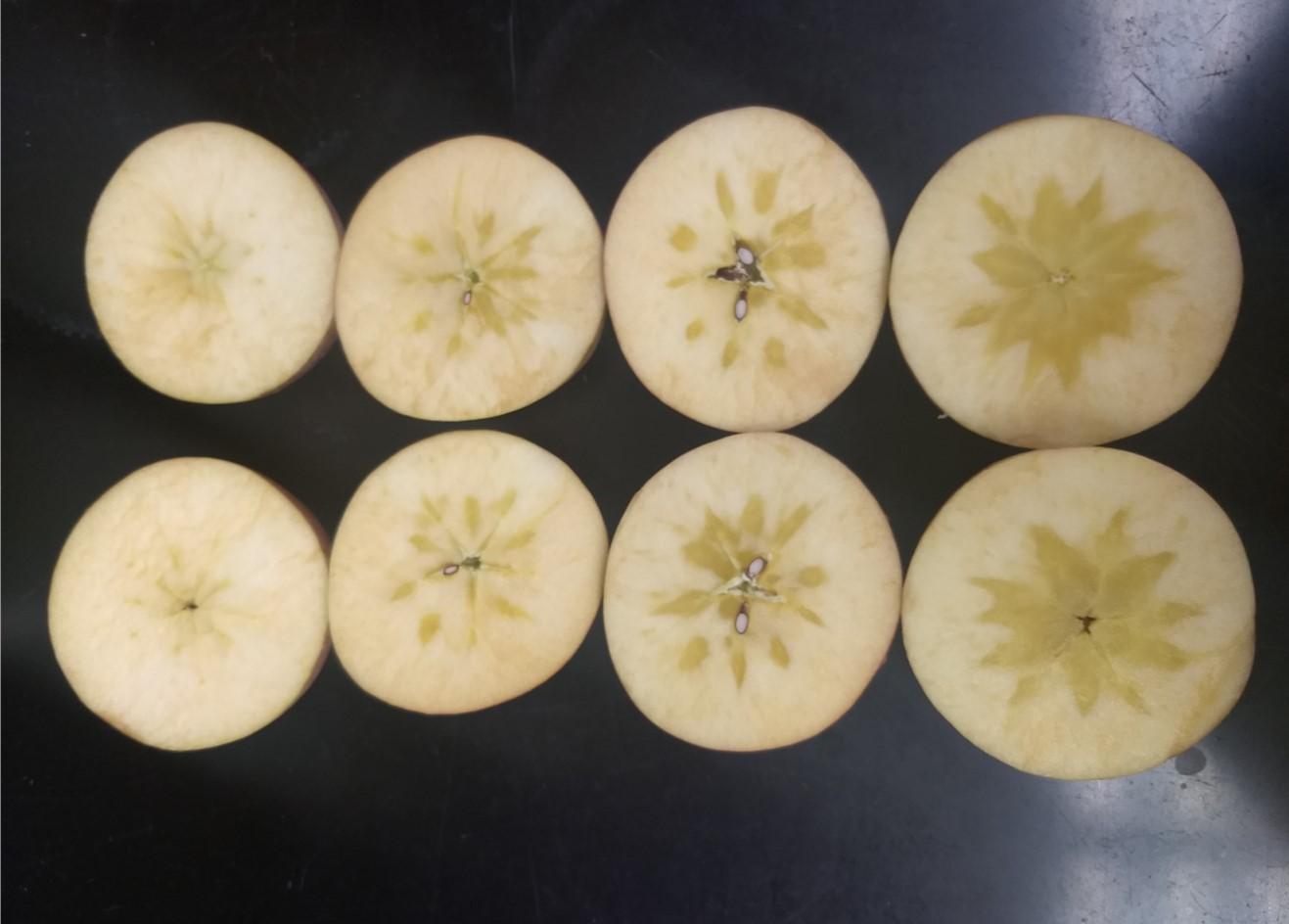Water core in apples: what is it, what causes it and how can it be controlled?
What is it?
Water core (Fig. 1) is one of the many physiological disorders affecting apples. Physiological disorders are abnormalities in the various apple tissues that result in loss of quality, loss of marketability and increased loss of fruit that is discarded and not consumed. These disorders are caused neither by fungi, insects or viruses, nor by mechanical damage. The incidence of water core can vary from year to year. Not all apple varieties are affected equally, some of the most susceptible being Cox's Orange Pippin, Delicious, Fuji, Braeburn, Jonathan, Stayman, Starkrimson, although it can also be detected in Golden Delicious, Granny Smith and McInstosh, among others.

Water core has only internal symptoms, not external, making it difficult to predict without destroying the fruit. Water core is recognized by the presence of translucent, glassy-looking areas in the flesh of apples. When the problem is mild, it usually appears around the vascular bundles and the core of the fruit. In more severe cases, it may extend to the pulp cells underneath the apple skin (Fig. 2).
The degree of severity of the disorder is determined at the time of harvest, as the disorder does not continue to develop once the fruit has been harvested and is in storage or transport. Furthermore, symptoms of water core, when the damage is mild to moderate, may disappear in storage. However, when the level of damage is very severe, the affected tissue may develop browning that can subsequently trigger decay and fermentation of the damaged tissue, developing unpleasant aromas and flavors (Fig. 3).
What causes water core?

Water core is caused by an increase and accumulation of a sorbitol-rich liquid. Sorbitol is a sugar alcohol that is one of the main carbohydrates transported from the leaves to the fruit in apples. Sorbitol is also widely used in the food industry to produce sugar-free products. Sorbitol, once in the fruit, is rapidly converted to other carbohydrates, so its content represents a very low percentage of total sugars (less than 10%); however, some studies have indicated that the sorbitol content in water-cored fruit can be almost double compared to fruit that do not develop the disorder. This excessive increase in sorbitol causes an attraction of water to the cells (given the difference in concentration) producing this accumulation of liquid that gives rise to the glassy appearance of the water core. This liquid in the intercellular space decreases the oxygen level or gas exchange of the cells causing browning and fermentation due to the presence of sugars.
To date, the direct causes of why sorbitol transport is altered and water core is produced are not entirely clear. What is known with certainty is that the disorder originates directly in the orchard and that it occurs mainly associated with fruit harvested at an overripe stage. In addition, it has been found to be more frequent in large, light-exposed and/or calcium-deficient fruit. The calcium effect would be associated with delayed maturity and with effects on the modification and alteration of cell membrane integrity, which could affect sorbitol accumulation. In addition, vigorous trees and excessive nitrogen fertilization increase the incidence of the disorder. Environmental factors such as temperature have also been associated with the development of water core. Low temperatures (below 50 degrees Fahrenheit) around 4 to 5 weeks prior to harvest have a direct effect on water core expression in susceptible cultivars. It is speculated that, at low temperatures, leaves senesce rapidly and thus sorbitol stored in the leaves can be translocated to the fruit quickly. Water stress during fruit ripening in the orchard is also considered as a factor that may aggravate the development of this disorder. The damage is also more frequent in apple varieties that must be left on the tree for a longer period of time to develop the skin color necessary for marketing. This practice results in the harvest of overripe fruit with obvious internal symptoms of the disorder.
How can water core be controlled?
The best way to control the incidence of this disorder is to harvest fruit at optimum maturity, avoiding harvesting overripe fruit or keeping fruit hanging on the tree for excessive time. In addition, balanced and uniform tree growth should be maintained. Pre-harvest management such as pruning and thinning should avoid increasing tree vigor. In addition, the fertilization program should be adequate to avoid calcium deficiencies or excessive nitrogen increase. It should be remembered that if the level of water core at harvest is mild or moderate, the damage will be reabsorbed during fruit storage, and thus disappear.
This article appears in July 2023, Volume 14, Issue 5 of the Vegetable and Fruit News.
